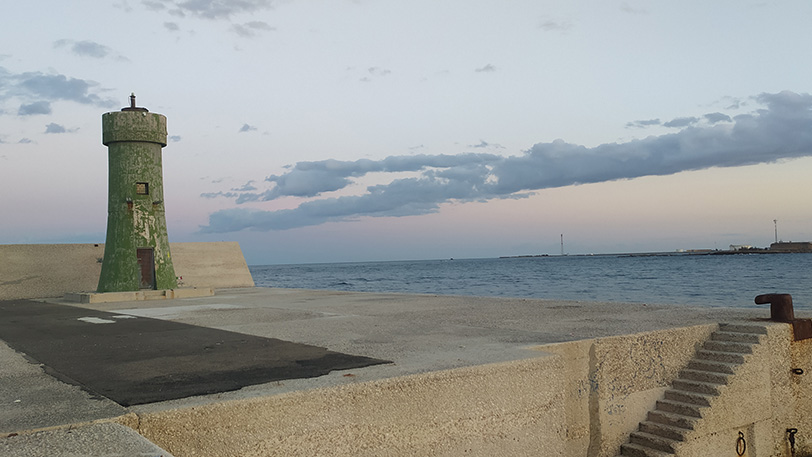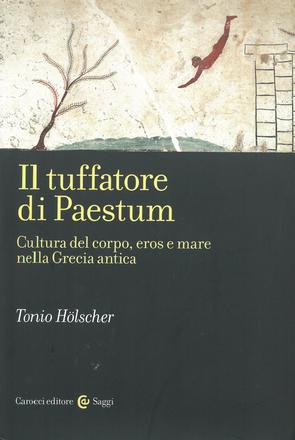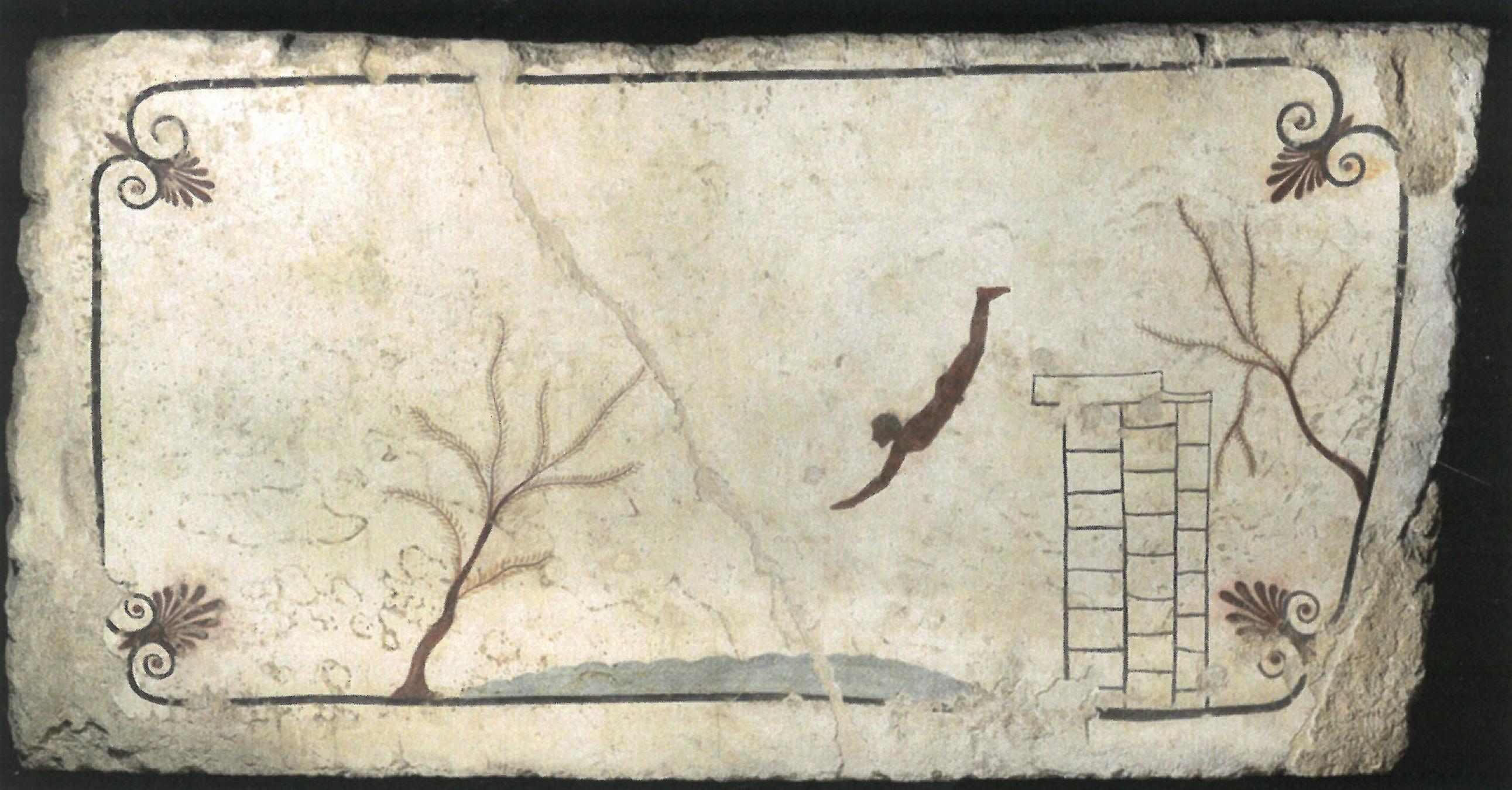Adriatic views: Brindisi, Punta Riso pier
In his wanderings along the Adriatic, Fabio Fiori returns to Brindisi, the gateway to this sea full of charm and light. An out-of-season dive takes him back to an essay by Tonio Hölscher on the sea, body culture and eros in ancient Greece

Adriatic-views-Brindisi-Punta-Riso-pier
Brindisi, Punta Riso - Photo F. Fiori
"Brindisi! This city (Brindisi is Italian for “toast”, translator’s note) is a toast to the Adriatic that ends or begins, to a pelagic journey that ends or begins", I wrote a few years ago.
Brindisi! I repeat to myself today, opening a frozen beer, sitting at the feet of the green lighthouse, at the end of the Punta Riso pier. I came back here, once again, to see this extraordinary city from the sea, because from here, you can see it better as a whole, with its beauties and atrocities, after walking eastward for more than two kilometres out to sea.
This majestic dam, which when seen from the old urban port docks shines in its whiteness in the morning, is also a wonderful water square. On this late November afternoon, however, the colours are warmer, while looking west the sunset is incendiary. This dam is one of those wonderful Mediterranean water squares where your senses and your spirit can find a relationship with the sea. But also a carnal relationship, if you undress and dive in, in defiance of absurd bathing bans. Absurd because the spaces are large and there is no danger, neither environmental (here the waters are very clear) nor linked to the safety of navigation. Because it would be like banning walking or running along a street, or exercising in a square.
Therefore, with a libertarian spirit, faithful to the teachings of Thoreau, master of civil disobedience and necessary ecology, I undress and dive. The waters are still warm, in this very long late summer. The surface is just dappled by the friendly breeze of Libeccio. I swim a little bit and then take a break. Belly up, legs and arms open. The gaze enraptured by two white terns circling in an indigo sky. I go back up onto the high platform and dive in a few more times, reviving an ancient and Mediterranean gesture.
Tonio Hölscher writes about diving in Il tuffatore di Paestum. Cultura del corpo, eros e mare nella Grecia antica (“The Diver of Paestum. Culture of the body, eros and the sea in ancient Greece”), published a few months ago by Carocci editore (pp. 132; €16). An essay fresh like the water that pervades it and seductive like the images that enrich it, starting from the very frescoes of the Tomb of the same name, discovered during excavations in the necropolis of the ancient city of Paestum, the Greek Posidonia, in June 1968.
The frescoes, preserved in the National Archaeological Museum, date back to 480 BC, and – together with the others found in Tarquinia and many other ceramic images from the same period – restore all the ancient attention to diving, swimming and water games.
Such attention is often interpreted as carrying metaphorical meanings linked to death or myth, which however, according to Hölscher, are also linked to actual daily passions, where "as in no other region of the ancient world are earth and sea intertwined", where of good-for-nothing men it used to be said that "they can’t write or swim".
Twelve chapters, which ideally refer numerically to the months of the year and therefore to the cyclical nature of life, because from the Tomb we move on to the youthful age of ephebes and maidens, to then talk about adults, heroes and gods, to finally return to the cult of the deceased, to the relationships "with the culture and lifestyle of antiquity: age classes and living environments, the culture of the body, eroticism".
Such cyclical nature can also have a very close relationship with water, in that eschatià that is the sea that bathes our cities – watery and wild, where you can rediscover a relationship with Nature, where you can return to being a child and experience a necessary wildness. Page after page, we dive into a mythical world of which the sea is an archetypal and at the same time experiential landscape. Thus the image of the Paestum Diver takes on a new meaning for me, becoming an invitation to rediscover the here and now, the pleasures that the sea offers every day.
I get out of the water and, like in an Aesop’s fable, two dolphins appear in the distance announcing the necessary re-appropriation of urban waters. They did it without asking for permission, giving back to the external port, with the Pedagne islands (prohibited!), its ancient aura, linked to a multi-millennial interweaving of nature and culture, of animal and human frequentation. We must do it, to relive and update the pleasures that even the banks and urban waters can offer, here as in every other Mediterranean city.
Featured articles
- Take part in the survey
Adriatic views: Brindisi, Punta Riso pier
In his wanderings along the Adriatic, Fabio Fiori returns to Brindisi, the gateway to this sea full of charm and light. An out-of-season dive takes him back to an essay by Tonio Hölscher on the sea, body culture and eros in ancient Greece

Adriatic-views-Brindisi-Punta-Riso-pier
Brindisi, Punta Riso - Photo F. Fiori
"Brindisi! This city (Brindisi is Italian for “toast”, translator’s note) is a toast to the Adriatic that ends or begins, to a pelagic journey that ends or begins", I wrote a few years ago.
Brindisi! I repeat to myself today, opening a frozen beer, sitting at the feet of the green lighthouse, at the end of the Punta Riso pier. I came back here, once again, to see this extraordinary city from the sea, because from here, you can see it better as a whole, with its beauties and atrocities, after walking eastward for more than two kilometres out to sea.
This majestic dam, which when seen from the old urban port docks shines in its whiteness in the morning, is also a wonderful water square. On this late November afternoon, however, the colours are warmer, while looking west the sunset is incendiary. This dam is one of those wonderful Mediterranean water squares where your senses and your spirit can find a relationship with the sea. But also a carnal relationship, if you undress and dive in, in defiance of absurd bathing bans. Absurd because the spaces are large and there is no danger, neither environmental (here the waters are very clear) nor linked to the safety of navigation. Because it would be like banning walking or running along a street, or exercising in a square.
Therefore, with a libertarian spirit, faithful to the teachings of Thoreau, master of civil disobedience and necessary ecology, I undress and dive. The waters are still warm, in this very long late summer. The surface is just dappled by the friendly breeze of Libeccio. I swim a little bit and then take a break. Belly up, legs and arms open. The gaze enraptured by two white terns circling in an indigo sky. I go back up onto the high platform and dive in a few more times, reviving an ancient and Mediterranean gesture.
Tonio Hölscher writes about diving in Il tuffatore di Paestum. Cultura del corpo, eros e mare nella Grecia antica (“The Diver of Paestum. Culture of the body, eros and the sea in ancient Greece”), published a few months ago by Carocci editore (pp. 132; €16). An essay fresh like the water that pervades it and seductive like the images that enrich it, starting from the very frescoes of the Tomb of the same name, discovered during excavations in the necropolis of the ancient city of Paestum, the Greek Posidonia, in June 1968.
The frescoes, preserved in the National Archaeological Museum, date back to 480 BC, and – together with the others found in Tarquinia and many other ceramic images from the same period – restore all the ancient attention to diving, swimming and water games.
Such attention is often interpreted as carrying metaphorical meanings linked to death or myth, which however, according to Hölscher, are also linked to actual daily passions, where "as in no other region of the ancient world are earth and sea intertwined", where of good-for-nothing men it used to be said that "they can’t write or swim".
Twelve chapters, which ideally refer numerically to the months of the year and therefore to the cyclical nature of life, because from the Tomb we move on to the youthful age of ephebes and maidens, to then talk about adults, heroes and gods, to finally return to the cult of the deceased, to the relationships "with the culture and lifestyle of antiquity: age classes and living environments, the culture of the body, eroticism".
Such cyclical nature can also have a very close relationship with water, in that eschatià that is the sea that bathes our cities – watery and wild, where you can rediscover a relationship with Nature, where you can return to being a child and experience a necessary wildness. Page after page, we dive into a mythical world of which the sea is an archetypal and at the same time experiential landscape. Thus the image of the Paestum Diver takes on a new meaning for me, becoming an invitation to rediscover the here and now, the pleasures that the sea offers every day.
I get out of the water and, like in an Aesop’s fable, two dolphins appear in the distance announcing the necessary re-appropriation of urban waters. They did it without asking for permission, giving back to the external port, with the Pedagne islands (prohibited!), its ancient aura, linked to a multi-millennial interweaving of nature and culture, of animal and human frequentation. We must do it, to relive and update the pleasures that even the banks and urban waters can offer, here as in every other Mediterranean city.












